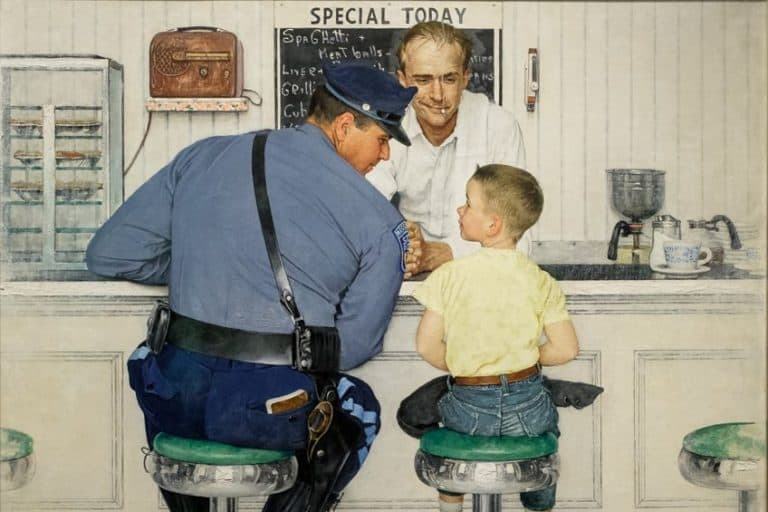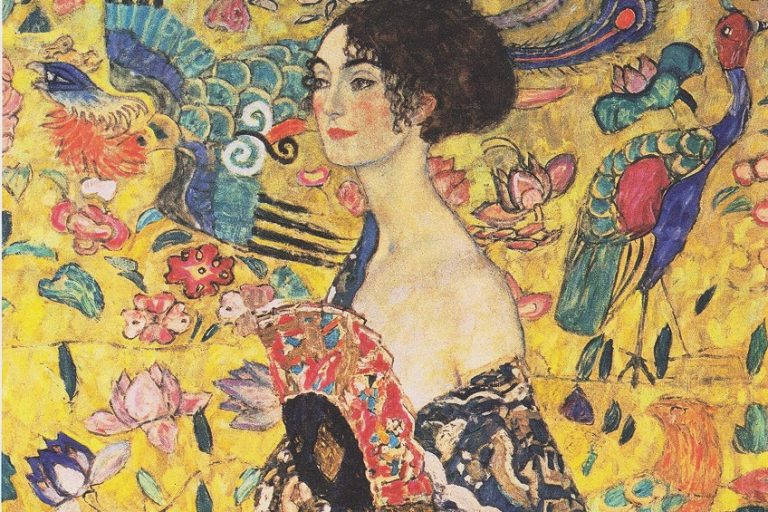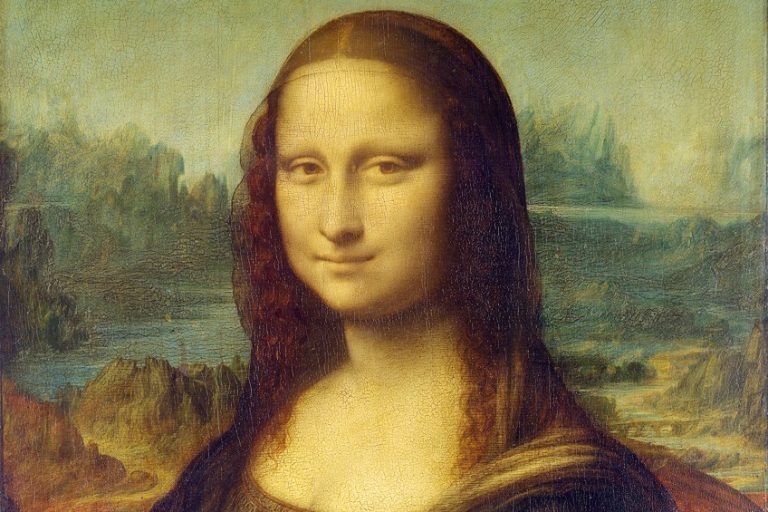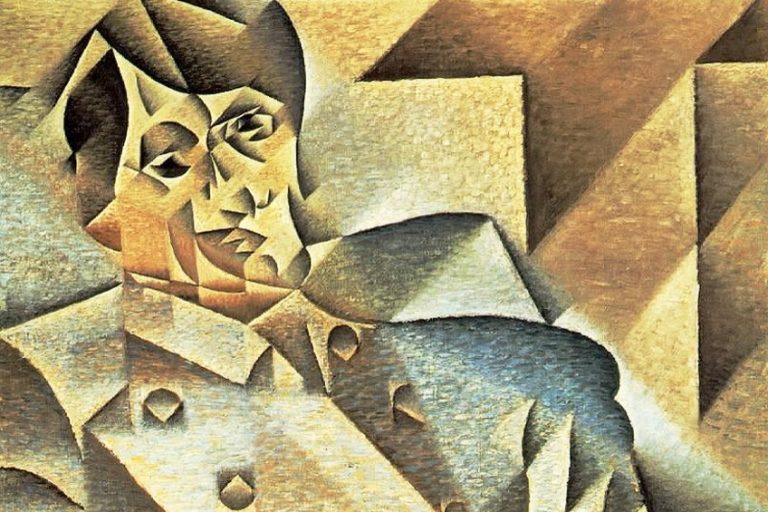“The Swing” by Jean-Honoré Fragonard – “L’Escarpolette” Painting
The Swing (c. 1767-1768) by Jean-Honoré Fragonard is a famous Rococo painting depicting a woman on a swing, seemingly wild and carefree, but if you are not familiar with 18th-century customs you might miss the hidden meanings. We steal a glance at this painting in the article below.
Artist Abstract: Who Was Jean-Honoré Fragonard?
Jean-Honoré Fragonard was born in April 1732 and died on August 22, 1806. He was born in the town called Grasse in France and moved to Paris when he was young. He studied under the artists like Jean-Baptiste-Siméon-Chardin, François Boucher, and Charles-André van Loo. In 1752 he won the Prix de Rome prize and studied in Italy for five years, from 1756 to 1761.
He was married to Marie-Anne Gérard, who was also an artist and worked alongside him. They had a daughter Henriette-Rosalie Fragonard and a son Alexandre-Évariste Fragonard. He mostly painted genre scenes in the Rococo art style but has been known to also paint in the Neoclassical style. He was commissioned by wealthy clientele from the aristocracy.
He has been considered one of the greats of French painting, although his name was obscured for some time. His work influenced Impressionism as well as contemporary artists.

The Swing (c. 1767-1768) by Jean-Honoré Fragonard in Context
The Swing, otherwise titled as L’Escarpolette in French, is a Rococo painting by Jean-Honoré Fragonard. It has alternatively been titled The Happy Accidents of the Swing, and in French, it is Les hasards heureux de l’escarpolette.
We will start with a brief contextual analysis and the significance of such subject matter during 18th-century France, as well as what made this painting quite salacious for its time. We will then explore the subject matter and painting techniques in more detail through a formal analysis.
| Artist | Jean-Honoré Fragonard |
| Date Painted | c. 1767-1768 |
| Medium | Oil on canvas |
| Genre | Genre painting |
| Period / Movement | Rococo |
| Dimensions | 81 x 64.2 centimeters / 31 7/8 x 25 ¼ inches |
| Series / Versions | N/A |
| Where Is It Housed? | The Wallace Collection, London, England, United Kingdom |
| What It Is Worth | Price uncertain |
Contextual Analysis: A Brief Socio-Historical Overview
The Swing painting by Jean-Honoré Fragonard is more than just a woman on a swing, it is a peepshow into 18th-century French aristocratic customs and cultures, including the art style at the time, which was known as Rococo. For a better understanding of The Swing painting, let us take a closer look at the Rococo style before moving on. It started around the 1730s and declined around the 1770s. It developed in France but spread throughout Europe to countries like Italy and Germany.
The Rococo style centered around the expression of the grandiosity of the French aristocracy and nobility, which came into power after the death of King Louis XIV in 1715. This put a halt to the reign of the monarchy until the reign of King Louis XV in 1722, and the aristocracy reigned free during this time.

During King Louis XIV’s reign, the artistic style has been described as more “geometric” and “serious”. This was the Baroque style, which also centered around more religious themes in art. The Rococo represented almost the opposite of this, and paintings depicted scenes around themes of love, lust, courtship, sexuality, and mythology. There was an overall “playfulness” and “frivolity” to it, as it has been described.
The Rococo style was dominant in all types of art like architecture, sculpture, décor, furniture, fashion, and more.
It was an ornate style and favored curves and curls. Colors were also lighter, brighter, and warmer. The idea was to evoke a sense of lightness and awe in onlookers, to display the grand and opulent. A leading artist of this period was Jean-Antoine Watteau, who depicted the characteristic scenes of love, play, and courtship and people dressed in lavish costumes surrounded by nature, typically in a lush garden setting, engaged in festivities or celebrations. The French Academy created a new genre Fête Galante, which means “courtship party”, in 1717 to describe Watteau’s paintings.
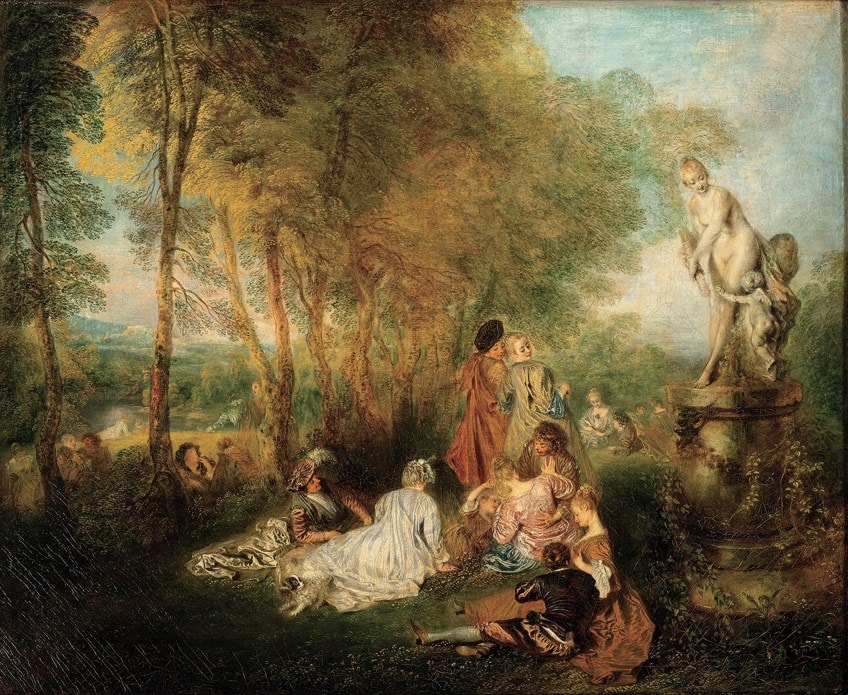
The Woman on a Swing: The Inside Story
Within this context we can understand more about Fragonard’s clientele, who were often wealthy aristocrats. However, it is unclear who exactly commissioned this woman on a swing painting, some believe it was the Baron de Saint-Julien, who was a Receiver General part of the Clergy.
What is known, however, is that Fragonard’s “client”, as we will refer to him, requested a depiction of his mistress and himself.
She was requested to be portrayed on a swing with a bishop pushing her, while the client was in the bushes with a full-frontal view of his maîtresse. When Fragonard was given this request, he did not depict a bishop, but instead someone who appeared to be the mistress’ husband.

An interesting fact about this painting, according to records from Charles Collé, who was a dramatist and writer during the 1700s, is that the client first approached another artist, namely Gabriel-François Doyen, but the latter declined the offer due to the lascivious nature of the painting.
Doyen painted more serious subject matter within the History painting genre, and reportedly referred the client to Fragonard.
Formal Analysis: A Brief Compositional Overview
Below we will take a closer peek at The Swing painting, starting with the subject matter in more detail and the inherent symbolism that Fragonard aptly incorporated. We will also discuss various art elements like color and texture, which formed a large part of Fragonard’s artistic style.
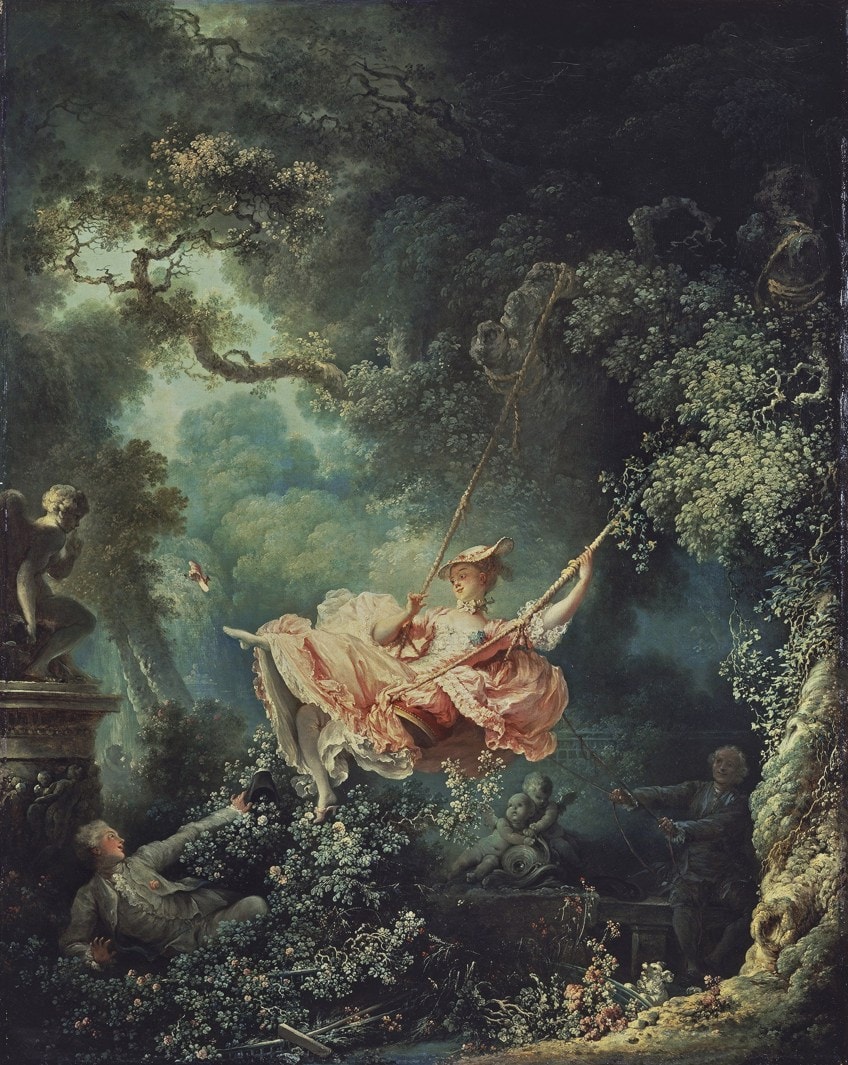
Visual Description: Subject Matter
The Swing painting depicts a young woman as the central figure, she is wearing a beautiful light pink-peach dress or gown. She enlivens the scene as she swings, in mid-air, her gown almost engulfing the red velvet and gilded seat. Her left hand (our right) holds on to the swing’s rope while her right hand (our left) is open. Her head is slightly tilted to her right and her eyes are gazing at something ahead of her.
As she swings forward, she flings her heeled slipper from her left foot, her left leg is held out straight in the air and her right leg is bent. Her slipper is aimed at a large marble statue of what appears to be a Cupid, the Roman god of love.
This motion reveals her white stockings and pinkish-colored garter around her right leg under her dress, and we can assume it possibly reveals more.
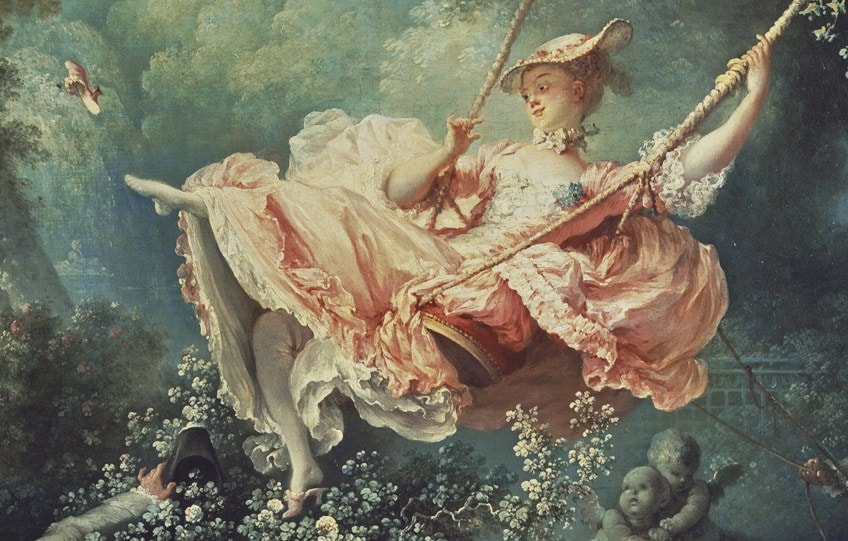
In front and a bit below the woman, in the rose bushes, is a gentleman looking up at her, and what appears to be accidentally up her dress. He appears to have fallen over, supporting himself on his right elbow while his left arm is outstretched, his hat in hand.
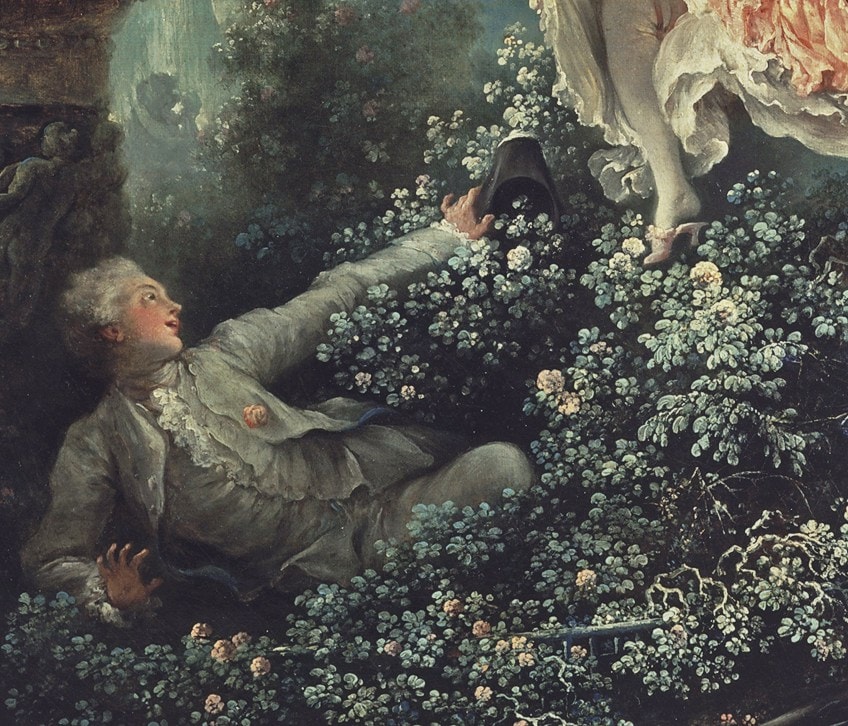
If we look at the rest of the scene in the background, and to the right of the composition, in the shaded area, we will notice there is another man behind the woman. He is seated on a stone bench firmly holding on to two ropes attached to the woman’s swing. He is swinging her back and forth.
In front of him is a small white dog looking up at the woman and barking at her, his front paws resting on the border of a hedge while he stands on his back legs.
He is looking up at her with a warm and jovial facial expression, smiling as she swings. This man is possibly her husband, unaware of the younger-looking gentleman in front of her in the bushes, who is possibly her lover.
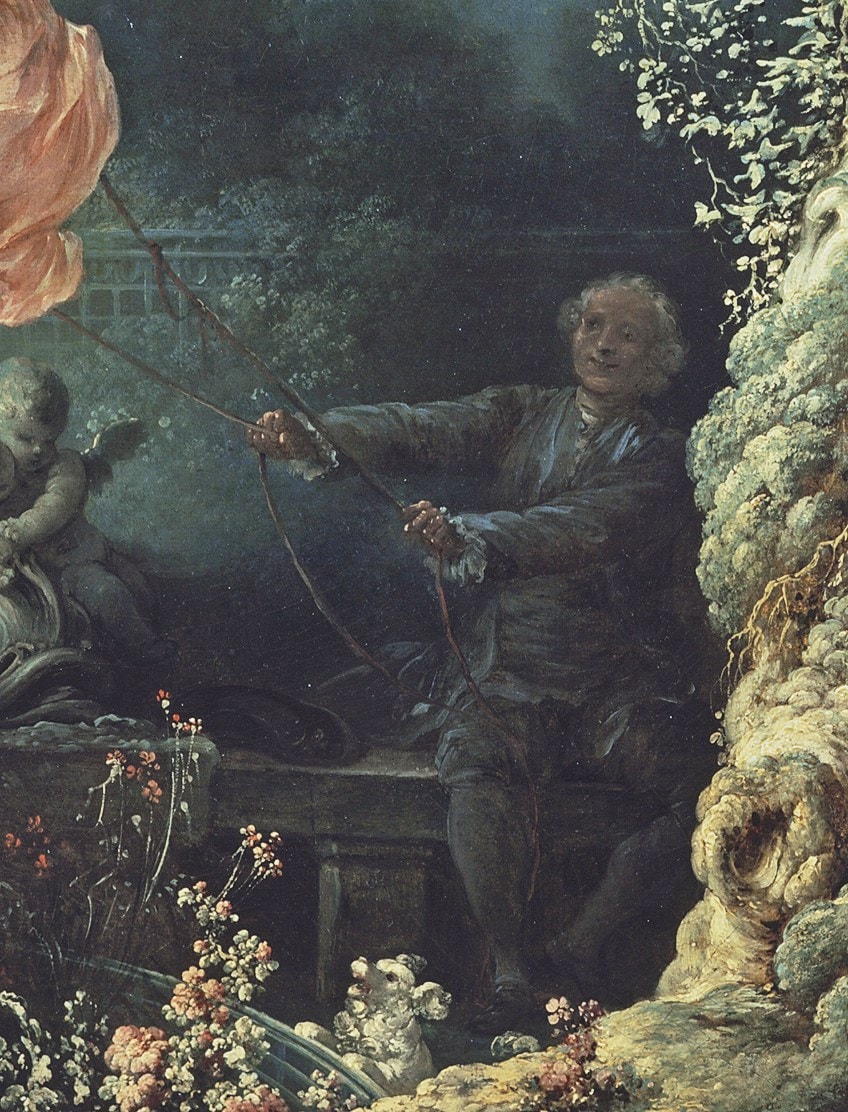
To the right of this older man are more statuettes, which appear to be putti. These are usually statues of nude children who are cherubs. The two putti depicted here appear to be on a dolphin, which was a common subject depicted in art during the Renaissance era.
The one “putto” is looking up at the woman with a worried facial expression.
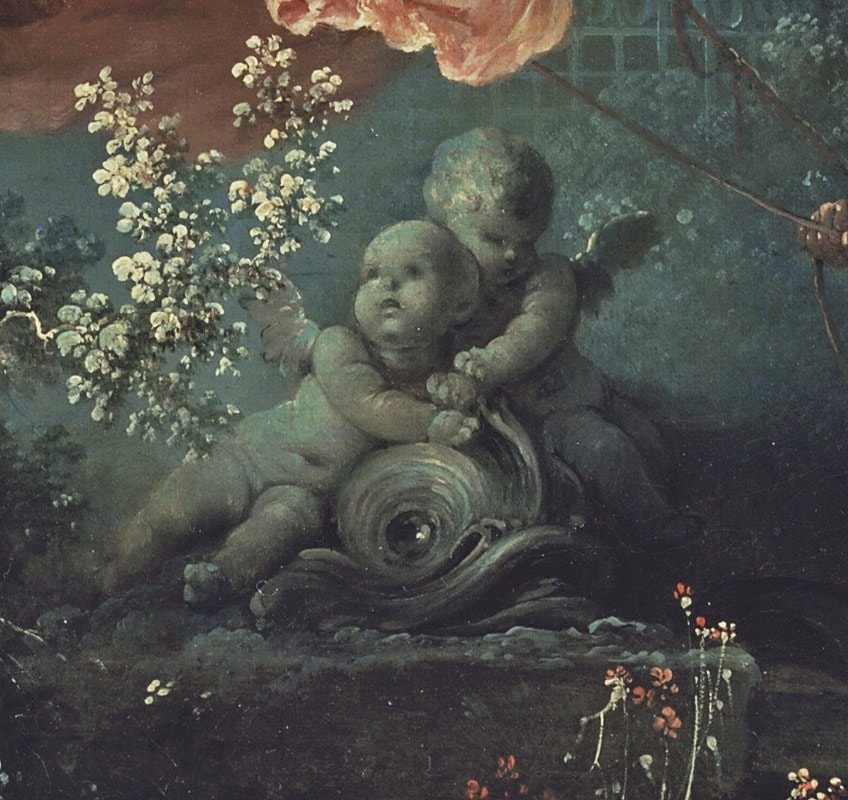
The three figures are set in a lush gardenscape filled with large overarching trees. There are various bushes and what appear to be small and low hedges around these. There is a wooden rake lying on the ground and partly over the hedges in the foreground.
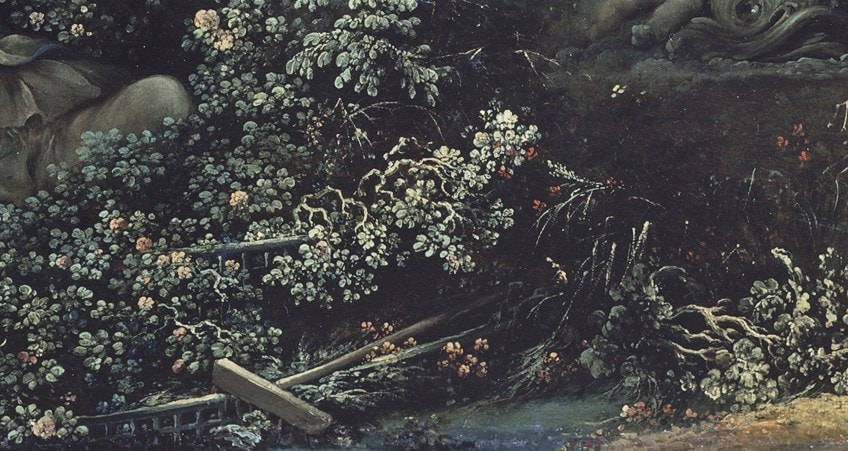
The Swing Symbolism
There are numerous symbolic references in The Swing painting, each suggestive of sexual desire, courtship, infidelity, and restriction. The left side of the composition alludes to desire and sexual freedom. The woman is an embodiment of letting loose, so to say.
She is not constrained by the societal rules of how women were supposed to behave, and she does not seem ashamed of the fact that her dress is revealing her legs and possibly more.
The Cupid statue is reminiscent of Etienne-Maurice Falconet’s Menacing Cupid (1757), which was a marble sculpture reportedly made for Madame de Pompadour, who was King Louis XV’s mistress and confidante. She was also one of the leading patrons of the arts in the Rococo style. Both Cupids have a finger to their lips as if they are keeping a secret.
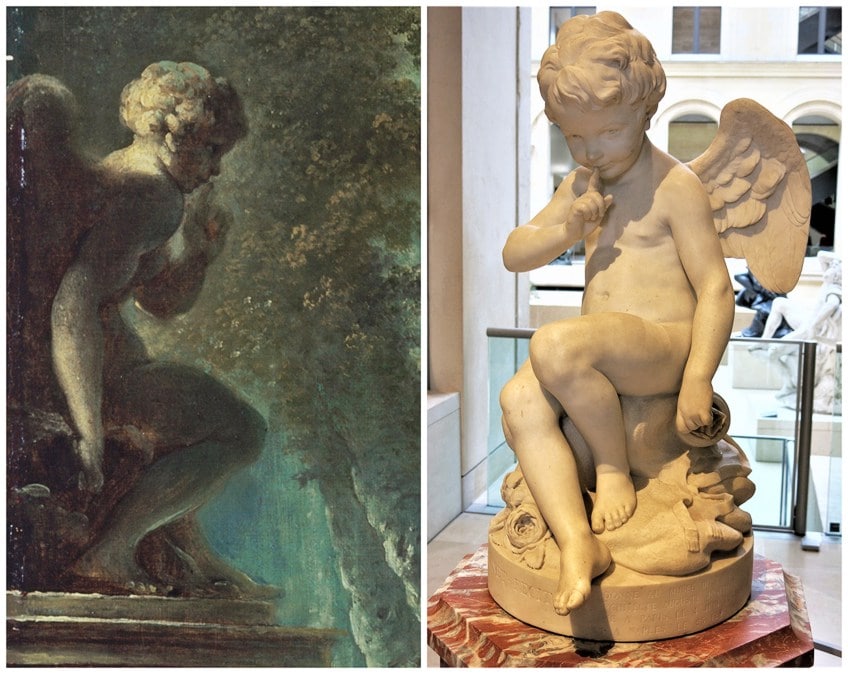
If we look at the right side of the composition, there is more restraint and control. The man behind the woman, holding on to the swing’s ropes, is believed to be her husband, but the ropes have been compared to the restriction of marriage and possibly the idea of ownership, as he has a hold of her throughout her “swinging” activity. The white dog below is also symbolic of fidelity and is a common symbol utilized in many paintings.
Furthermore, the worried facial expression of the chubby cherub could allude to the possibility of the woman being unfaithful.
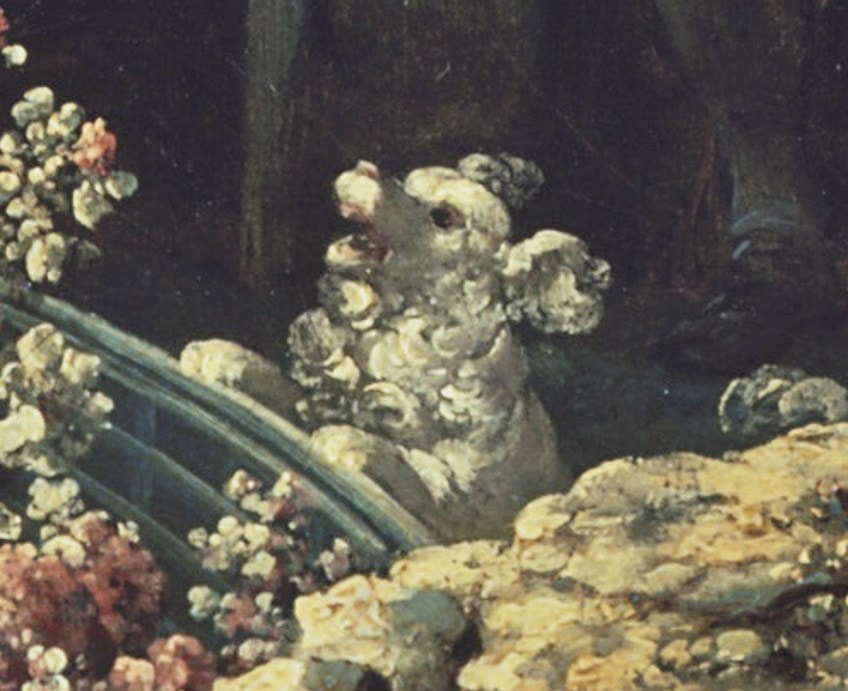
Color and Light
There is a contrast of light and dark in The Swing painting, we see how Fragonard created this by highlighting the woman as she swings into the center. The opening in the trees above her is a possible light source that spotlights her figure as she swings out of the shadows behind her.
She also appears to be the only colorful figure in the composition, where her dress is like a beacon of color and light.

While the roses below the woman echo the color of her dress, the rest of the composition, the background, and two male figures are darker in color with more neutral, cooler greens and blues denoting the shadows.
These cooler colors are offset by the warmer colors of the woman’s dress.

Texture
There is a variety of implied textures in this composition, starting with the woman’s dress, which appears soft and almost weightless as the air combs through it on the swing. The tree bark in the bottom right corner appears mossy, further emphasizing the lushness of this garden.
We also see how Fragonard created a hazy effect in the background as we look at the distance between the trees as if this is fog.
Furthermore, we can see the physical brushstrokes from the paint applied on the canvas. There is a looseness and expressiveness in Fragonard’s manner, especially noticeable in the woman’s dress. This was a common characteristic of his artwork and possibly a very early example of techniques we will find in Impressionist painters’ artworks.

Line, Form, and Shape
There is a sense of movement and dynamism created by the forward motion of the swing, this is highlighted by the ropes tied to the trees above the woman. This forward motion is further emphasized by the woman’s outstretched leg and shoe flung from her foot.
Furthermore, the men’s outstretched arms create a horizontal focus, also emphasizing this back-and-forth motion that the woman enacts.
We can see there is a vertical emphasis due to the swing’s ropes and the tall trees. However, there are various other lines and shapes at play in this composition, noticeable by the wrangling tree branches and the curving forms of the trees around the central figure.

Stealing a Glance
While Fragonard’s rendition of an aristocratic past-time and pleasure catalyzed more serious subject matter in the later Neoclassical movement, it has also impacted contemporary artists like the British-Nigerian Yinka Shonibare. His famous re-enactment of this painting is a life-sized installation made of various materials, titled The Swing (after Fragonard) (2001).
In “The Swing” painting, the woman becomes both the subject and object: she is the central subject of the composition, while also being the object of desire and affection for the men. She is held in place between both and yet just out of their reach, in mid-air. We wonder, who will she choose next? Little did Fragonard know that centuries later we would be stealing a glance at the inner life of a wealthy man and his pleasurable escapades represented by his mistress.
Take a look at our The Swing painting webstory here!
Frequently Asked Questions
Who Painted the Woman on a Swing?
The French artist Jean-Honoré Fragonard painted the famous oil on canvas titled The Swing, L’Escarpolette, (c.1767-1768), otherwise also titled The Happy Accidents of the Swing, otherwise known in French as Les hasards heureux de l’escarpolette.
What Does The Swing Painting Symbolize?
The Swing (c. 1767-1768) by Jean-Honoré Fragonard symbolizes ideas of infidelity, desire, eroticism, love, and power. The woman on a swing is a symbol of desire and possibly the mistress of the man in the bushes gazing up at her, also peeking into her open dress. The man behind her is possibly her husband, holding on to her through the ropes attached to the swing, which could also mean his power over her.
Where Is The Swing Painting Now?
The Swing (c. 1767-1768) by Jean-Honoré Fragonard is housed at the Wallace Collection in London, England in the United Kingdom. It was reportedly bought by Lord Hertford in 1865 at a Paris auction previously owned by several notable figures including the Charles Auguste Louis Joseph de Morny, commonly referred to as Duc de Morny.
Alicia du Plessis is a multidisciplinary writer. She completed her Bachelor of Arts degree, majoring in Art History and Classical Civilization, as well as two Honors, namely, in Art History and Education and Development, at the University of KwaZulu-Natal, South Africa. For her main Honors project in Art History, she explored perceptions of the San Bushmen’s identity and the concept of the “Other”. She has also looked at the use of photography in art and how it has been used to portray people’s lives.
Alicia’s other areas of interest in Art History include the process of writing about Art History and how to analyze paintings. Some of her favorite art movements include Impressionism and German Expressionism. She is yet to complete her Masters in Art History (she would like to do this abroad in Europe) having given it some time to first develop more professional experience with the interest to one day lecture it too.
Alicia has been working for artincontext.com since 2021 as an author and art history expert. She has specialized in painting analysis and is covering most of our painting analysis.
Learn more about Alicia du Plessis and the Art in Context Team.
Cite this Article
Alicia, du Plessis, ““The Swing” by Jean-Honoré Fragonard – “L’Escarpolette” Painting.” Art in Context. May 27, 2022. URL: https://artincontext.org/the-swing-by-jean-honore-fragonard/
du Plessis, A. (2022, 27 May). “The Swing” by Jean-Honoré Fragonard – “L’Escarpolette” Painting. Art in Context. https://artincontext.org/the-swing-by-jean-honore-fragonard/
du Plessis, Alicia. ““The Swing” by Jean-Honoré Fragonard – “L’Escarpolette” Painting.” Art in Context, May 27, 2022. https://artincontext.org/the-swing-by-jean-honore-fragonard/.




